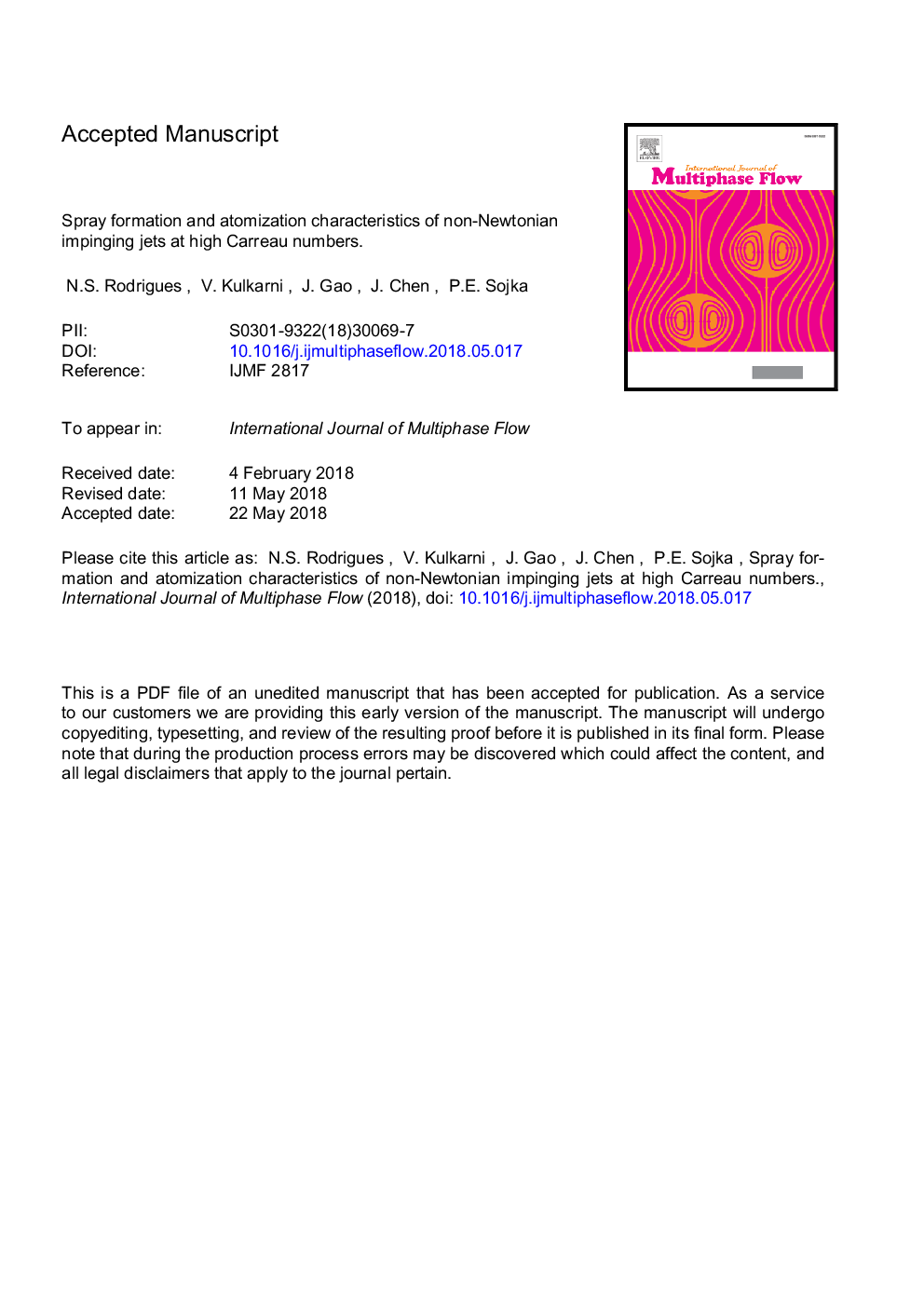| Article ID | Journal | Published Year | Pages | File Type |
|---|---|---|---|---|
| 7060060 | International Journal of Multiphase Flow | 2018 | 45 Pages |
Abstract
Over the last two decades there has been a renewed interest in employing shear-thinning non-Newtonian liquids for use with liquid rocket engines due to a desire for greater safety and performance. Since the difficulty with producing quality atomization is the main disadvantage for using non-Newtonian liquid propellants, further understanding of the breakup physics and accurate measurement of the spray characteristics is needed. The atomization produced by the like-on-like jet impingement of three different non-Newtonian liquids was experimentally investigated in this work using shadowgraphy and Phase Doppler Anemometry (PDA) at high strain rates (105-106), which correspond closely to the strain rates used in practical rocket engines. The three water-based solutions tested were of two different grades of Carboxymethylcellulose (CMC): 0.5â¯wt.-% CMC-7HF, 0.8â¯wt.-% CMC-7MF, and 1.4â¯wt.-% CMC-7MF. The Bird-Carreau rheological model was used to characterize the non-Newtonian behavior and a generalized Carreau number was used as the primary parameter to characterize the liquid viscosity inside the orifice at injection. A generalized Bird-Carreau jet Reynolds number Rej,gen-BC and the jet Weber number Wej were used as primary parameters to characterize the spray formation, sheet breakup length, drop size, and drop velocity. The unique spray formation a behavior of the three non-Newtonian liquids was ascribed to the relative influence of the inertial vs. viscous forces, primarily expressed through Rej,gen-BC. At many relatively high inertial force test conditions, drops in the spray were near spherical and could be reliably measured using PDA. Spray characteristics of intact sheet length, drop diameter, and drop velocity were observed to be strong functions of Rej,gen-BC. In addition to providing fundamental understanding to aid with injector design for liquid rocket engine applications using non-Newtonian liquids, the measurements presented in this work could be used to validate a future closed-form analytical non-Newtonian atomization model, which remains an open problem in non-Newtonian impinging jets literature.
Related Topics
Physical Sciences and Engineering
Chemical Engineering
Fluid Flow and Transfer Processes
Authors
Neil S. Rodrigues, Varun Kulkarni, Jian Gao, Jun Chen, Paul E. Sojka,
